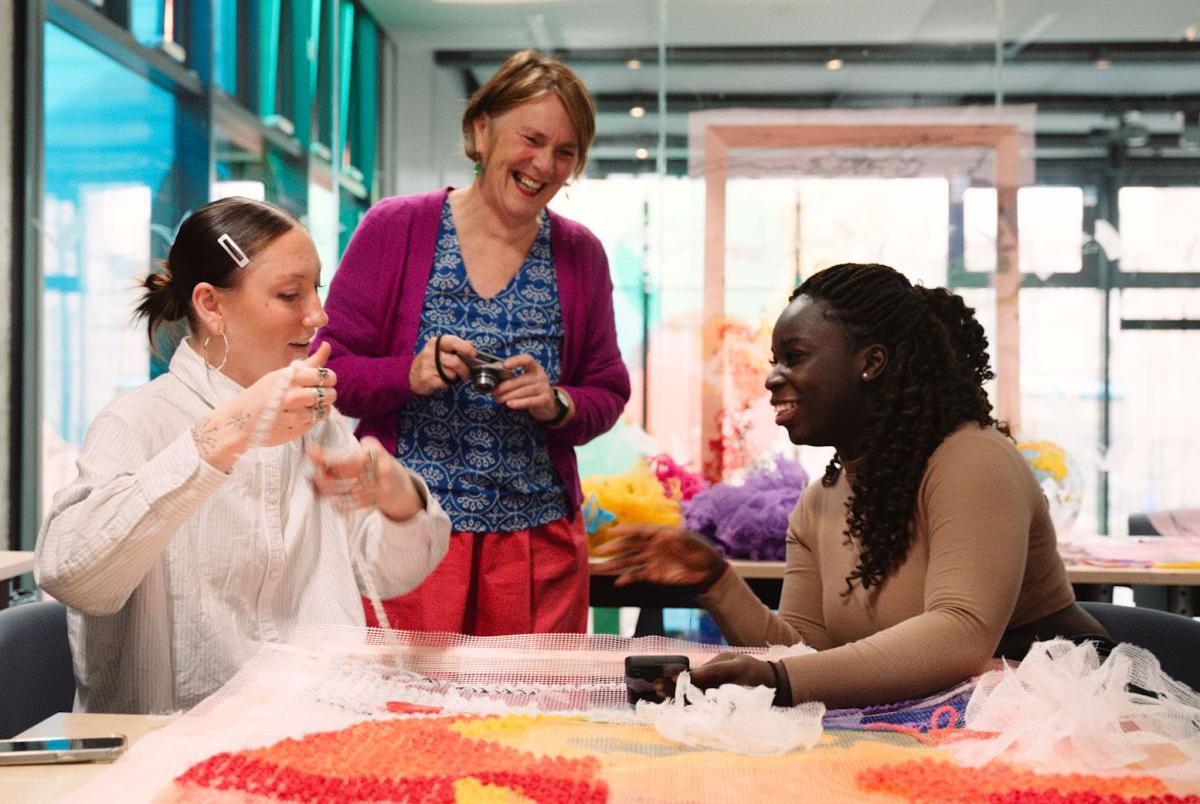
Over the last few months, Culture, Health & Wellbeing Alliance, alongside partners The Happy Museum and Culture Declares Emergency, have had the privilege of reading through and selecting a winner for the Healthy People and Planet Award. Although of course creative connection with the land is an ancient wisdom and practice, it’s been a joy to see the sheer variety and levels of innovation happening in what is still a relatively evolving area within the context of our current climate emergency.
Shortlisting projects for this award was particularly difficult, and one thing we noted was just how much the language and way of thinking and talking about projects has evolved since the 2022 Awards. This prompted CHWA to review and rename the award to more broadly reflect the interconnectedness between how we treat ourselves, each other and the planet we call home.
Using the awards as an opportunity to learn more about the sector is key, and CHWA analyzed the application data to draw out common themes, considerations and approaches that practitioners and organisations are adopting to develop and deliver thoughtful, holistic and effective projects. We were particularly struck by the consideration to access from a number of submissions. In their recent horticultural wellbeing programme, Nene Nursery identified local areas of high deprivation and disengagement and provided targeted support, offering free sessions and a low cost shuttle bus service. They also ensured accessibility was built into the design of the garden space, offering an accessible composting toilet, and singular park seating options for those who might need more personal space.
The number of projects working with smaller, more targeted communities was noted. This also helped deepen the impact of several submissions, particularly when working with groups disproportionately affected by the climate disaster, such as women, disabled people, and those from the global south. A great example of this is Drag Declares Emergency, who worked with the LGBTQIA+ community using queer crafting skills to respond to the climate emergency by making sustainable drag costumes.
Ensuring that participants had input at every stage has also become more common, and helped many projects feel much less extractive. The most effective projects were those who offered multiple ways to engage in this; such as through planning or feedback sessions, offering polls, and allowing projects to change and develop throughout. Oldham Libraries: Speak English Together Group were a great example of this; their project evolved in response to participants skills, with participants taking on leadership roles and enhancing the final outcome. Similarly, the young people involved with The Great Imaginings work are viewed as collaborators in every project, and their radical youth committee is the engine that powers all that they do.
There has also been an increased awareness and addressing of tokenistic engagement with nature. The projects that scored most highly didn’t just think about what could be gained for participants, but also how the project itself could improve planetary outcomes, for example by using waste materials or addressing a local need around biodiversity. Similarly, the increase in multi-artform projects is also heartening; helping ensure the widest possible engagement and reach and reiterating the adaptability and skills of the sector workforce. Gossamer Thread Circus project, FEREL, is a great example of this, working across live performance, poetry, workshops, exhibitions and more.
The ambition of the projects has also grown in recent years, and benefits now often extend beyond the initial participants. Whether through training or public speaking, or an exhibition, photo diaries or podcasts, many of the applications are now also considering legacy, helping to galvanize, inspire and advocate for further change. For their recent climate focused film making project, Change is Coming, Barnsley Libraries chose to hold a public screening of their film, and invited local council and policy staff. The film has also been made available for schools to prompt further discussions.
With climate related anxiety an ever-pressing concern, the attention to care has been one of the biggest and most exciting developments we’ve noticed in this area of creative health work. We were reassured to see people considering how they look after staff, collaborators and participants both during and after their involvement. Signposting, building in paid reflective practice and evaluation time, and the addition of wellbeing professionals all demonstrates a culture of care that ensures work remains sustainable, and artists, practitioners, staff and participants remain healthy and happy for longer.
If you’ve been inspired by the CHWA Awards and want to start your own project, we recommend you look at the Creative Health Quality Framework.
For more information on our shortlist, winners, judges and the previous awards click here
